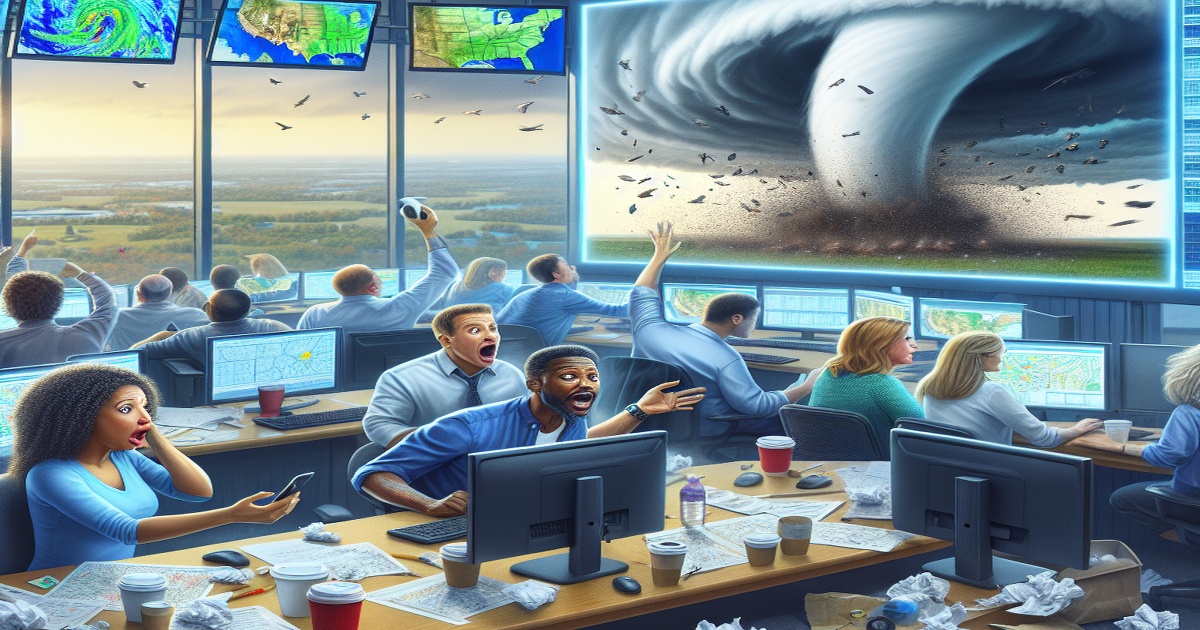The Louisville office of the National Weather Service (NWS) is currently experiencing staffing shortages, which are negatively affecting their tornado response capabilities. Meteorologists in Kentucky indicated that they may not be able to conduct damage assessments or confirm tornado occurrences for several days, as severe weather continues to affect the area. According to Brian Neudorff, unavailability of staff due to an ongoing threat of severe weather and the active seasonal conditions is the primary reason for this delay.
Meteorologist Michael Kochasic also mentioned that the situation is exacerbated by some staff being on spring break and retirements that have further reduced their manpower. As a solution, the NWS has requested the public’s assistance in sending photographs of storm damage, which they can later use to support their damage surveys. A request for a comment from the Louisville office regarding these issues went unanswered.
These staffing challenges come at a time of considerable concern following layoffs ordered by the Department of Government Efficiency, which have affected hundreds of employees within the National Oceanic and Atmospheric Administration (NOAA). The scientific community is alarmed about how these cuts could compromise public safety and diminish essential meteorological research. UCLA climate scientist Daniel Swain criticized the decision as an extremely poor choice that endangers both public safety and economic resilience against weather-related hazards.
Before the staffing cuts, the NWS was already operating with reduced personnel. The situation has also led to the suspension of weather balloon launches, which are crucial for gathering vital atmospheric data that assists in predicting severe weather. Meteorologist Tyler Roney described the cancellation of these observations as detrimental, as they play a key role in providing accurate forecasts.
Tornado damage surveys are essential for understanding tornado dynamics, such as their paths, intensities, and impacts. Ohio State University researcher Jana Houser cautioned that inadequate surveying could mislead forecasters about the frequency of tornadic activity and misclassify the damage severity. She expressed that if surveying capabilities are not consistently maintained, it could severely hinder researchers’ understanding of tornado behavior over time.
As tornado threats linger in Kentucky, experts note that the peak of tornado season is typically from May to June, with this year's activity expected to occur predominantly outside the traditional Tornado Alley. Kochasic assured that they would continue to collaborate with local emergency management to assess damage reports as they arise, extending gratitude for the public's patience during this tumultuous time.







5 Comments
Noir Black
The public’s involvement through photos shows solidarity; we can make a difference together!
Katchuka
I hope they find a way to fill the gaps soon. Good luck to all the staff working under these tough conditions!
Eugene Alta
Meteorologists are doing their best given the circumstances! Proud of their dedication to public safety.
KittyKat
Meteorologists should not be stretched thin like this. We need more funding and fewer cuts!
Loubianka
Despite the challenges, I trust the meteorologists to do their best with the resources they have. We need to support them!